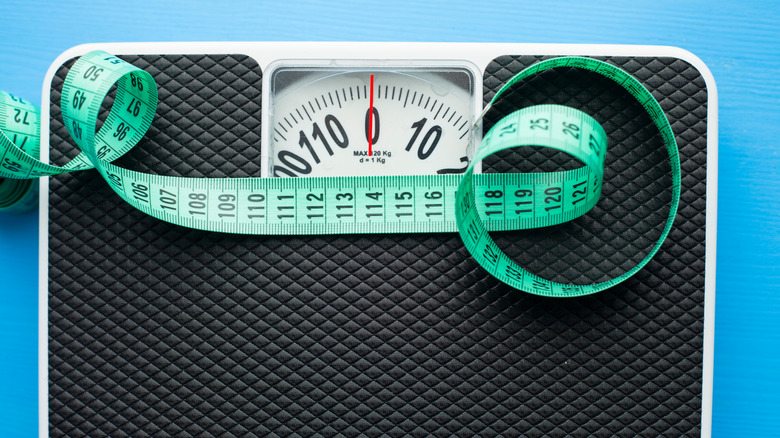What Your Waist Size Can Reveal About Your Health
Our bodies are constantly giving us signs of their current condition. Everything from irregular bowel movements to breath that smells a little off. The hints you receive are a daily reminder of how important it is to stay on top of your overall health and wellbeing. Despite all of the natural indicators we receive, knowing our body mass index, or BMI, is also a great way to measure if we are on a healthy track.
Unfortunately, there are limitations in how much we can learn from our BMI. According to Virtual Health, a person's BMI is a number that measures their weight in relation to their height. It is a good indicator of showing if you are underweight or overweight. It also can be a sign that you are more at risk for type 2 diabetes, cardiovascular disease, or hypertension. Yes, your BMI is a worthy number to know. But what it can't tell you is where the fat is on your body. The storage of extra fat in different areas of the body may be another clue that you have an increased risk of certain conditions. In order to get the most accurate overview of your health, it might be time to bring out the measuring tape.
Measuring your waist can give you an even better clue to health risks you face
One of the easiest and most informative places to measure your body is around your waist. In a scientific statement reported via Healthline, the American Heart Association states, "Recent data highlight abdominal obesity, as determined by waist circumference, as a cardiovascular disease risk marker that is independent of body mass index." The report goes on to say that tracking your waist circumference can also be an effective guide in measuring weight loss success.
As stated by Michigan Medicine, measuring your waist circumference will help you find out if you are carrying an excess of visceral fat. A high percentage of visceral fat is associated with an increased risk of type 2 diabetes, cardiovascular disease, and high blood pressure.
To measure your own mid section, place the measuring tape at the top of your hip bone and wrap it around the circumference of your waist. Michigan Medicine reports that males are at an increased risk for health conditions if their waist measures above 40 inches. For females, the risk increases when their waist measures greater than 35 inches.
We're always looking for ways to keep better track of our health. Looking out for the natural signs our bodies give us may be the best way. Though for a little extra insight, it would be wise to know your BMI and keep a measuring tape close by.


